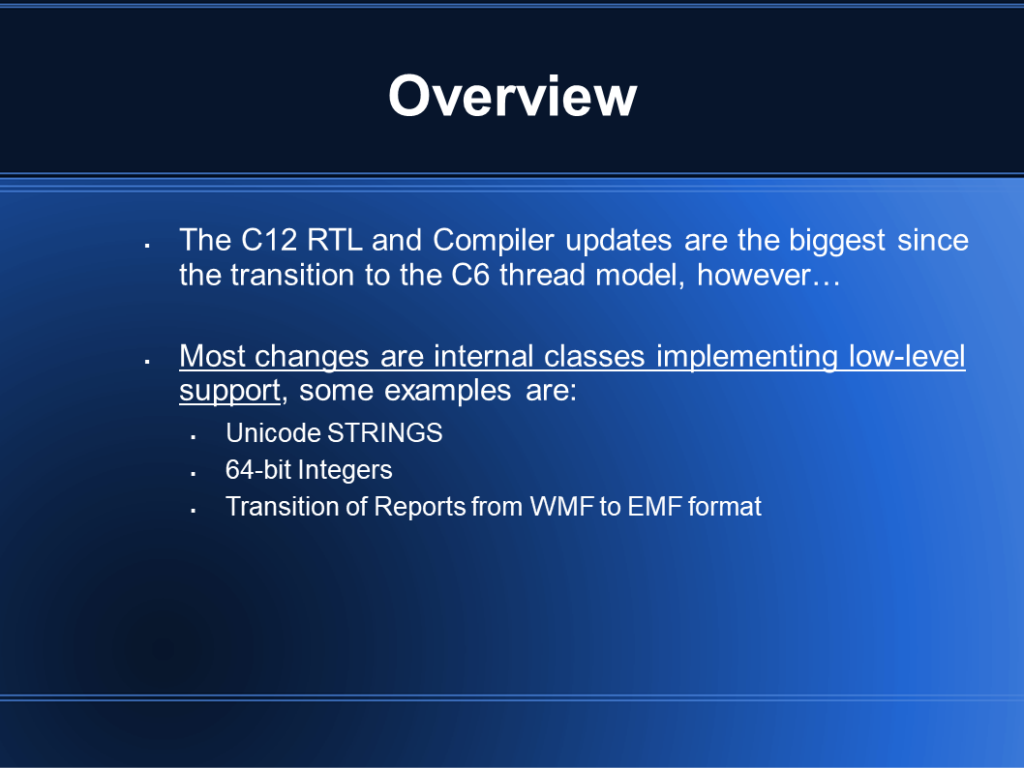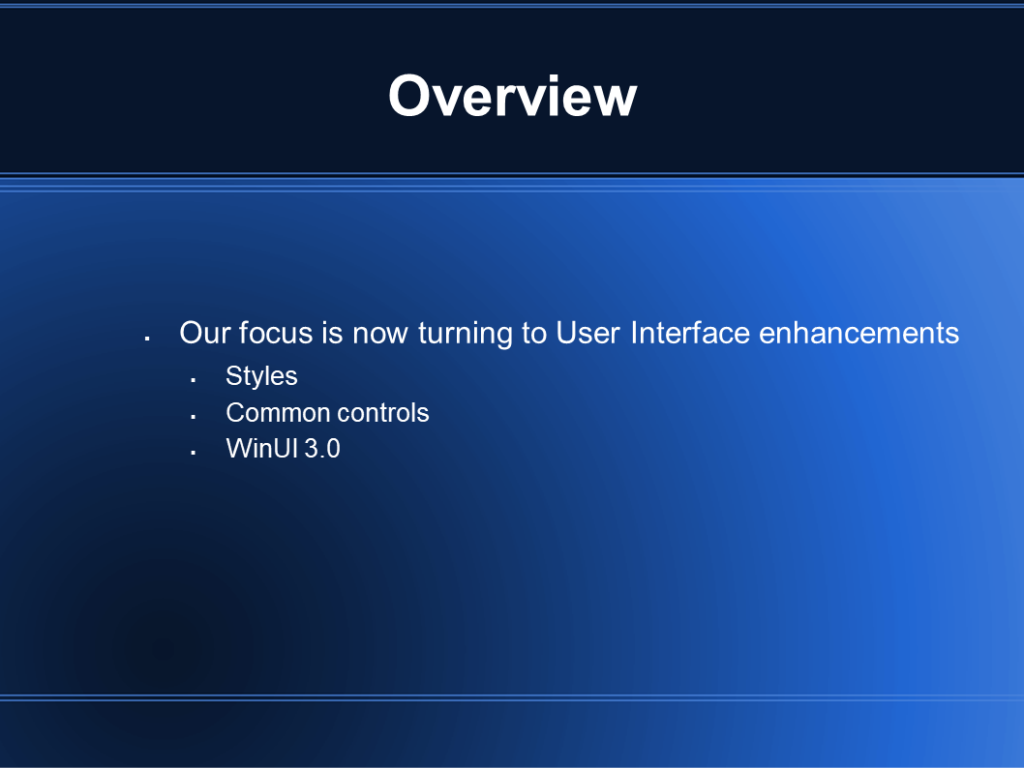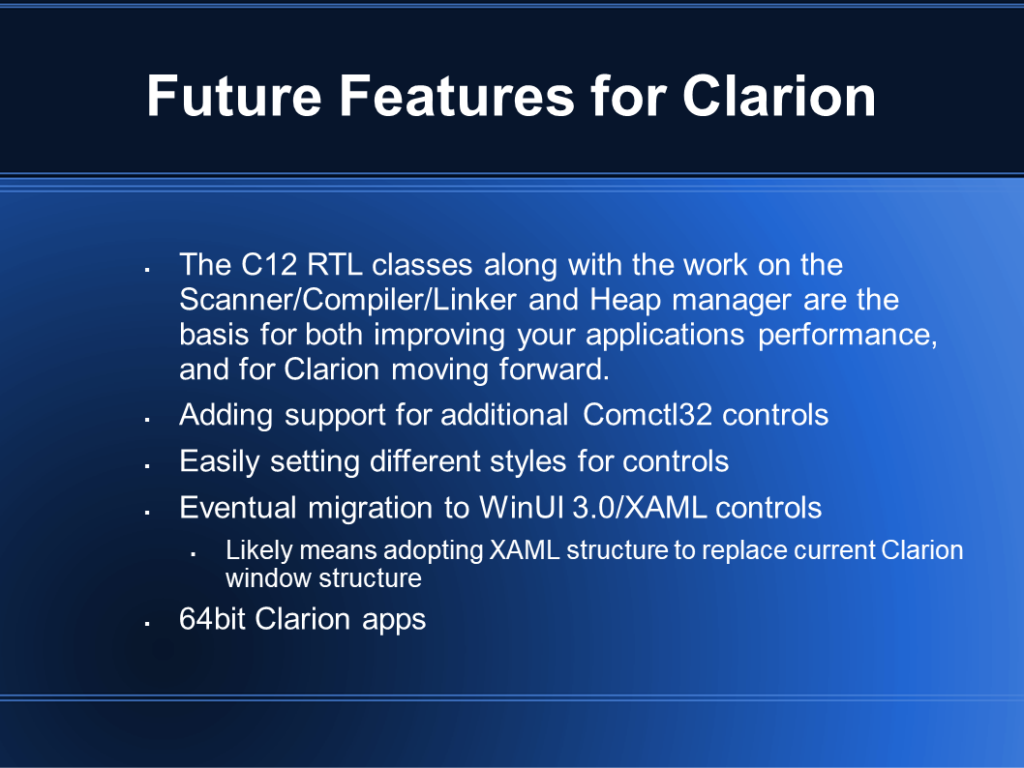The latest Clarion developer conference was hosted in Capetown, South Africa. From all accounts it was an excellent event! I was scheduled to do a remote presentation covering some of the future Clarion features. Unfortunately due to technical issues and scheduling problems I wasn’t able do the remote presentation. This post tries to capture and describe the key points of what was planned as a live remote presentation. I’ll be discussing this on ClarionLive on October 28th, 2022.


The key point is that the majority of new code in C12 is internal to the Runtime and the compiler, these are very important advances for the Clarion community.

The next area of development focus is on improvements for the End User Interface (the UI you present to your customers).

Here we have a typical Listbox (with the arrow pointing to it), and the other three images are the same Listbox with additional standard Window Styles applied to them.
Setting additional Styles would be handled at runtime before the Window is displayed via a function call or a PROP call. We plan to have a global template where you set the Styles for any supported control by control-type, the Style settings cascade to a Procedure level template so that all affected control-types can share same style (with the ability to override at the Procedure level). Of course you can also use the function/PROP in hand-code or an appropriate Embed point.

These are the same Styles applied as they appear on Windows 11. I’m only showing the Listbox control, but every control supports standard styles beyond the styles applied by the Clarion runtime. It is a simple, yet impactful way for you to change the UI of your app and potentially enhance it.
Additional ‘Common’ controls:


As we work toward adding support for additional controls the plan is to release them incrementally after the GA release of C12.

Here’s a rough timeline/history of the Microsoft UI for Windows developers:

After a deep dive into the .Net world, Microsoft has seemingly circled back to updating the Win API. The Windows App SDK targets both C++ developers and .Net developers.

Desktop apps can be enhanced with mobile and cross platform solutions, but desktop apps continue on as a critical aspect for most businesses.
